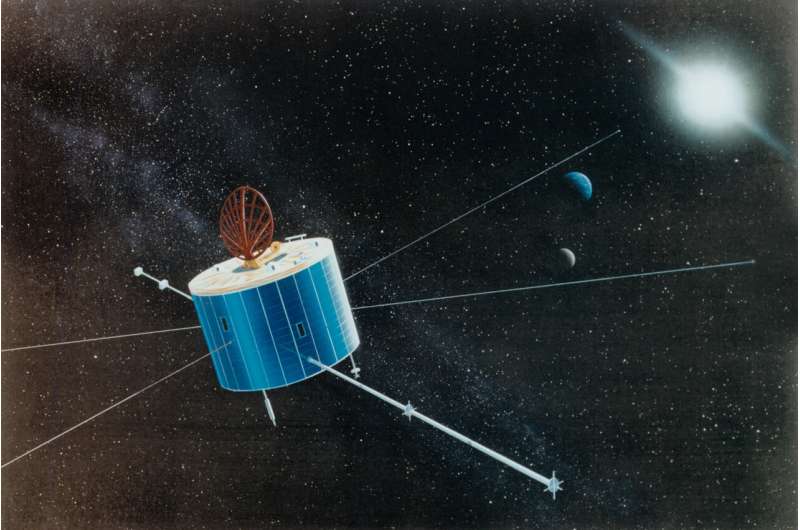NASA's Geotail mission experiences an anomaly

NASA's Science Mission Directorate, Japan's Institute of Space and Astronautical Science (ISAS), and the Japan Aerospace Exploration Agency (JAXA) are determining how to move forward with the joint Geotail mission since discovering the spacecraft's last operational data recorder has failed.
Originally, Geotail was equipped with two data recorders to collect the mission's scientific data. One data recorder failed in 2012 after 20 years of gathering information about the plasma environment around Earth. The remaining data recorder continued collecting data for 10 more years until it experienced an anomaly on June 28, 2022.
The team at JAXA discovered the error with the recorder and have been performing tests to investigate the cause and extent of the damage. Ongoing attempts to recover the recorder have been unsuccessful. Without a functioning recorder, the science data from the U.S. instruments can no longer be collected or downlinked. NASA, ISAS, and JAXA are deciding the best path forward for the mission given the failure.
Geotail launched on July 24, 1992, from Cape Canaveral Air Force Station in Florida, with the primary goal of studying the structure and dynamics of the tail region of the Earth's magnetosphere—the area of space surrounding Earth that is controlled by Earth's magnetic field—using a comprehensive set of scientific instruments. With an elongated orbit, Geotail has spent the last 30 years sailing through the invisible boundaries of the magnetosphere, gathering data on the physical process at play there. Geotail has made many scientific breakthroughs, including helping scientists better understand what causes material from the sun to pass into the magnetosphere. It has also made discoveries outside its intended scope, such as identifying oxygen, silicon, sodium, and aluminum in the lunar atmosphere.
Provided by NASA's Goddard Space Flight Center



















